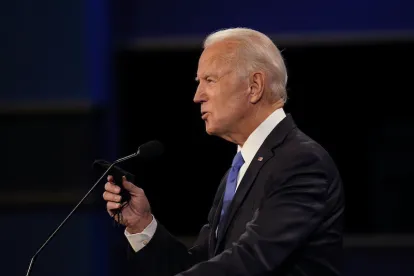On November 15, President Biden signed into law the $1 trillion Infrastructure Investment and Jobs Act (the “IIJA” or the “Act”) which cleared the House of Representatives in early November after months of delay. The new law (also known as the Bipartisan Infrastructure Framework or BIF) garnered considerable bipartisan support in the Senate where it was negotiated and crafted over the summer, and a narrow but ultimately determinative slice of crossover votes in the House. The first of two large infrastructure packages promised under the Administration’s Build Back Better agenda, the Act allocates $550 billion in new federal funding in a bold attempt to address decades of underinvestment in America’s infrastructure. These funds will go to support investments in highways, passenger and freight rail, public transit, ports, airports, water, broadband, energy efficiency, power and grid resiliency and electric vehicle charging stations, as well as to fund a number of research and pilot programs.
Important to the expansion of the public-private partnership (“PPP”) model in the transportation, social infrastructure and broadband sectors, among other things the IIJA provides guidance on the use of PPPs on eligible projects, expands several programs that leverage additional private sector investment in infrastructure, and funds grants to consider asset concessions and PPPs, which we summarize below.
1. Transportation Infrastructure Finance and Innovation Act (TIFIA). The Act contains a number of updates to the federal TIFIA loan program, which should help expand the availability of low cost federal loans to projects procured under a PPP delivery method and improve the terms under which the Build America Bureau can commit funding to support projects. The changes include:
-
Extending the period for contingent commitments under a TIFIA master credit agreement from three years to five;
-
Raising the threshold above which more than one credit rating will be required for an eligible project ’s Federal credit instrument from $75 million to $150 million;
-
Extending the potential maturity of a TIFIA loan for a capital asset with an estimated useful life of more than 50 years to the longer of (a) 75 years after the date of substantial completion and (b) 75% of the estimated usable life of the asset.
-
Expanding the types of projects eligible for TIFIA loans to include:
-
Transit-Oriented Transportation Projects: A project to improve or construct public infrastructure that either
-
is located within walking distance from and accessible to a transit, passenger rail, intercity bus or intermodal facility, including a transportation, public utility or capital project; or
-
is an economic development project, including commercial and residential development and related infrastructure, that (a) incorporates private investment and (b) is physically or functionally related to a passenger rail station or a multimodal station that includes rail service, (c) has a high probability to commence work within 90 days, and (d) has a high probability of reducing Federal funds assistance for the rail station or service by increasing ridership, rental payments or other activities that generate revenue in excess of project costs;
-
-
Airport-related projects, including terminal development, gate construction and the conversion of vehicles and ground support equipment to low emission technology. (For a Transit-Oriented or Airport-related project to be eligible, a letter of interest must be delivered to the Secretary of Transportation (the “Secretary”) and it must receive a determination of eligibility from the Secretary by September 30, 2025. For each fiscal year, qualifying projects will be eligible for up to 15% of TIFIA’s total budget authorization for such fiscal year); and
-
Projects to acquire plant and wildlife habitats pursuant to a transportation project environmental mitigation plan that has been approved by the Secretary of Interior in accordance with the Wildlife Protection Act.
-
-
Requiring Payment and Performance Security: Any project making use of the TIFIA program must demonstrate that its design and construction are supported by appropriate payment and performance security, regardless of whether the obligor is a private entity (as is the case in PPP projects) or a State, local authority or any department or instrumentality thereof. If local law requires such security then the Secretary may accept that security if “the Federal interest with respect to Federal funds and other project risk related to design and construction is adequately protected”.
-
Providing for a Streamlined Application: The Act requires the Secretary to design, within 120 days after enactment of the IIJA, a streamlined application procedure for certain projects that have, among other required elements, a reasonable expectation that the contracting process for the project can commence within 90 days after a Federal credit instrument is obligated for the project under the TIFIA program.
2. Private Activity Bonds (PABs). The Act increases the limit of PABs for qualified highway or surface freight transportation facilities from $15 billion to $30 billion and expands the types of projects eligible for funding with PABs to include:
-
A Qualified Broadband Project (“QBP”), defined as any project that (a) is designed to provide broadband service solely to one or more census blocks in which 50% of the residents do not have access to residential terrestrial fixed broadband service that delivers at least 25 megabits per second (“mbps”) downstream and at least 3 megabits of service upstream, and (b) results in residential or commercial users or a combination of both enjoying speeds of at least 100 mbps download speed and 20 mbps upload speed. For a project to qualify as a QBP, however, the issuer will need to demonstrate that 90 of the locations that will receive the increased service either did not have any service or their service did not meet the minimum threshold of 25 mbps download/3 mbps upload. To qualify for PABs funding broadband projects, the issuer must also notify every existing broadband service provider in the service area and request information on the ability of each such existing provider to deliver gigabit service, and give such provider 90 days to respond.
-
Qualified Carbon Dioxide Capture Facilities, to include funding for[(a) the eligible components of carbon capture facilities; i.e. the equipment included in such facilities used to capture, treat, purify, compress, transport or on-site store industrially produced carbon dioxide, or that is integral to or used for the process to convert coal or petroleum residue or biomass or other materials recovered in the industrial process into a gas to be used for industrial conversion; and (b) certain direct air capture technologies.
Both new categories of eligible PABs projects will enjoy a 75% exemption from the volume cap under per Section 146(g) of the Internal Revenue Code.
The Act does not, however, accommodate an industry request to expand TIFIA and PABs eligibility to certain kinds of social infrastructure such as courthouses or government buildings, although as noted above residential and commercial buildings adjacent to rail stations or similar facilities will become eligible for TIFIA funding.
3. Requirements for Transportation Projects Carried Out through PPPs: The IIJA requires a public partner carrying out a project using Federal financial assistance with an estimated total cost of at least $100 million to meet certain requirements no later than 3 years after the date of project operations, including:
-
Conducting a review of the project, including a review of the compliance of the private partner with the terms of the PPP agreement;
-
Certifying to the Secretary that the private party is meeting the terms of the PPP agreement or notifying the Secretary that the private partner has not met one or more of the terms of the PPP agreement by including a brief description of each violation of the PPP agreement; and
-
Disclosing the certification or notifying the public without exposing any proprietary or confidential business information.
4. Value for Money Analysis: The entity carrying out a project estimated to cost more than $750 million and implemented with assistance under the TIFIA program or the Railroad Rehabilitation & Improvement Financing (“RRIF”) Program, will be required under the Act to conduct a value for money (VfM) analysis and report the analysis to the Secretary. Requirements include providing (a) an evaluation the life-cycle cost and project delivery schedule, (b) a cost comparison between public funding and private financing for the project, (c) a description of the key assumptions made in developing the analysis, including benefit-cost analysis regarding the allocation of risk, (d) a forecast of user fees and other revenues expected to be generated by the project, and (e) other information that the Secretary of Transportations deems to be appropriate for such VfM analysis; and submitting a report of the VfM analysis results to the Build America Bureau and the Secretary and by uploading the report to the project website.
The Secretary, in coordination with the Build America Bureau, is required to submit the compiled analyses to Congress. The Secretary is also required to coordinate with the Build America Bureau and issue guidance on performance benchmarks, risk premiums, and expected rates of return on private financing.
5. Asset Concessions: The IIJA authorizes certain grants (maximum $2 million) to eligible entities, including a state, a unit of local government and an agency of a state or local government, to help them “develop, review, or enter into an asset concession” with a concessionaire, a private individual or corporation. The grants under this section include:
-
Technical assistance grants used for (a) identifying assets for potential concessions, (b) soliciting and negotiating asset concessions and hiring staff for these purposes, (c) conducting a VfM analysis to compare benefits of asset concessions with other procurement methods, (d) evaluating options for the structure and use of asset concession payments, (e) assessing the risks and benefits of all contract provisions, (f) identifying best practices to protect the public interest, (g) identifying best practices for managing transportation demand and mobility to facilitate transportation demand management, and (h) integrating pricing, data, and fare collection with other regional operators; and
-
Expert services grants where a state or local government agency uses the grants to retain the services of an expert firm to get direct project-related assistance and services, including:
-
Project planning, feasibility studies, revenue forecasting, cost-benefit analysis, other economic assessments, public benefit studies, VfM analyses, business case development, lifecycle cost analyses, risk assessment, financing and funding options analyses, procurement alternative analyses, and statutory and regulatory framework analyses;
-
Financial and legal planning;
-
Early assessment of environmental review and regulatory processes and costs; and
-
Assistance with entering into an asset concession.
-
The Secretary will be required to ensure that, among other things: (a) the asset concession will not make it more difficult for an eligible entity to construct a new project, (b) the full amount of any asset concession payment will be used to pay infrastructure costs of the eligible entity, and (c) the terms of the asset concession do not result in any burden on taxpayers.





 />i
/>i

